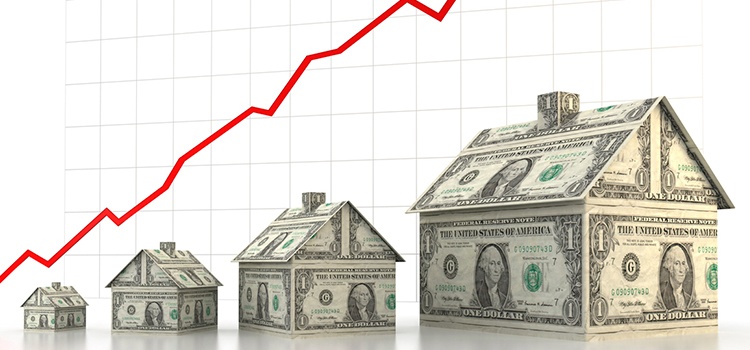There are about 85 million single-family homes in the U.S. Although it’s possible to rent nearly every home, the truth is that some homes make more profitable rentals than others.
If you’re thinking about buying your first rental property, or are adding another home to your real estate investment portfolio, keep reading to learn 12 key factors for investing in a profitable rental property.
Key takeaways
- The single-family rental (SFR) asset class is attracting capital from both private investors and large institutional owners and operators.
- Profitable rental property can be found in cities where the economy is strong, the population is growing, and listings and vacancies are low.
- Things to consider when looking for rental property include local amenities and transportation, increases in home value and rent price growth, and neighborhood ratings.
12 factors that may make a rental property profitable
Here are 12 key factors to consider when purchasing a home as a rental property.
1. Strength of local economy
Cities where job opportunities are increasing, businesses are expanding and relocating, and median household incomes are growing see more demand for housing and attract more tenants. Sun Belt cities, such as Phoenix, Austin, and Tampa Bay are 3 of many great rental property markets with vibrant economic growth due to business-friendly climates, lower taxes, and economic diversity.
2. Population growth
Economic growth, lower cost of living, and better quality of life attract more residents and businesses. Some of the fastest-growing places in 2021 and 2022 include Orlando, Florida; Spartanburg, South Carolina; Austin, Texas; Charleston, South Carolina; and Fayetteville, Arkansas. The U.S. Census Bureau QuickFacts page is a good resource for learning about population growth for every city, county, and state in the country.
3. Rent price change
Real estate investors use rental income from tenants to pay for operating expenses, property taxes, and mortgage payments. According to CoreLogic, single-family rents increased by 12.6% year over year, about double the rate of inflation, marking another historic high (as of January 2022).
However, rent prices don’t always go in one direction. Resources for learning more about long-term rent trends in a local market include Zumper Rent Research, Zillow Research, and local property management companies.
4. Home value growth
Buy-and-hold real estate investors aim to turn a profit from rental property with recurring rental income and an increase in equity value. While home prices may fluctuate from one year to the next, they historically increase over the long term, according to this chart from the Federal Reserve.
Resources for learning more about single-family home value trends at the metro level include Zillow Research and the Freddie Mac House Price Index (FMHPI), which measures the monthly price inflation for houses by state and metropolitan statistical area (MSA).
5. Number of renter households
The percentage of renter-occupied households also indicates how strong or weak the demand for rental property is. In cities where home prices are high, such as San Francisco, more than half of housing units are occupied by renters.
But cities and neighborhoods where home prices are relatively affordable sometimes have more renters than owners due to lifestyle preferences or demographics.
Investors can learn more about the number of renter households at the metropolitan and neighborhood levels by visiting Zumper Research and Niche.com’s Best Places to Live in America.
6. Listings and vacancies
Although the overall demand for rental property in a city may be strong, some neighborhoods may be less attractive for renters than others. Places with an abnormally high number of vacant homes or “For Rent” signs are an indication that landlords may need to reduce rents to attract qualified tenants, which can make a rental property less profitable.
Speaking with a local property management company, networking with other real estate investors in the area, and reading the local papers are 3 ways to learn which areas are hot for renters and which places are starting to cool off.
7. Competition
There’s a saying in the real estate business that money is made when a property is purchased, not when it’s sold. Getting caught up in a bidding war in a seller’s market, where the supply of homes is less than the demand for homes, could result in overpaying for a rental property.
Before making a purchase decision, create several analyses with different assumptions, including scenarios where home value and rent prices go down. Realtor.com/Research and Redfin’s U.S. Housing Market data are free resources for learning whether a housing market has balanced demand, is a seller’s market, or is a buyer’s market.
8. Neighborhood ranking
Neighborhood quality significantly affects vacancy rates and rent prices. Some investors prefer to purchase ‘cash cow’ properties where home prices may not appreciate much, but cash flow is solid, while other owners look for a more balanced blend of rental income and appreciation.
The Roofstock Neighborhood Rating is a free online tool investors can use to better understand the risks and rewards of different neighborhoods. Roofstock uses a proprietary algorithm to assess neighborhood-specific risks and benefits based on key attributes, such as home values, school district quality, and employment rates to determine if a neighborhood is a good match for a specific investing strategy.
9. Area amenities
Local amenities, such as highway access, public transit, shopping malls, dining and entertainment venues, medical facilities, and parks may attract tenants. Google Maps and Walk Score are good tools for learning more about amenities around a rental property from the comfort of your home office or living room.
10. Property taxes
Property taxes can vary widely from county to county and state to state and can take a big bite out of rental property profits. High property taxes aren’t always a negative because the money is used to fund public services and improvements.
In some counties, property taxes may increase when a previously owner-occupied home is turned into a rental property. Investors can learn more about a home’s property taxes from the local county assessor’s website and the property tax calculator from SmartAsset.
11. Climate
Earlier in this article, we mentioned that the Sun Belt is home to some of the best markets for rental property investing. As the pandemic continues to reshape work in America, a growing number of people are working from home by choice rather than necessity, according to Pew Research Center.
People who are no longer tethered to their place of employment are relocating to larger homes in more affordable cities where the cost of living is lower and the quality of life is better while saying goodbye to sub-zero wintertime temperatures.
12. Return on investment
In one way or another, all of these factors impact how potentially profitable a rental property could be. The more boxes an investor can check, the greater the odds of finding profitable rental property.
You can use the free rental property analyzer in this article to forecast the potential return of a property. Simply enter some information to view projected key return on investment (ROI) metrics, including cash flow, cash-on-cash return, net operating income, and cap rate.
How to buy a profitable rental property
The SFR sector had its best year on record in 2021, according to the Q4 2021 Single-Family Rental Investment Snapshot report from Arbor. Both private and institutional investors are investing in SFRs, attracted by double-digit rent growth and ultra-low vacancy rates.
Here are things that both beginning and experienced real estate investors look for when buying a rental property:
- Desirable neighborhoods close to good schools, transportation corridors, and major employment centers
- Total operating expenses including maintenance and repairs, property taxes and landlord insurance, and homeowners association (HOA) dues and fees
- Availability of a good local property management company to ensure the home and tenants are taken care of, rent is collected, bills are paid on time, and the property complies with local zoning and safety laws
- Local and state-landlord tenant laws, because some jurisdictions are more friendly to landlords than others
Closing thoughts
Now that you know what to look for in a profitable rental property, let’s talk about where to look. Working with a local real estate agent with access to the multiple listing service (MLS) and online listing websites like Realtor.com and Zillow are good options for homeowners, but they frequently come up short in finding a good rental property.
The Roofstock Marketplace lets everyone from first-time investors to global asset managers find, analyze, purchase, and manage SFR property from anywhere in the world. Since launch, buyers and sellers have completed over $5 billion in transactions in over 70 of the best rental property markets across the country.










